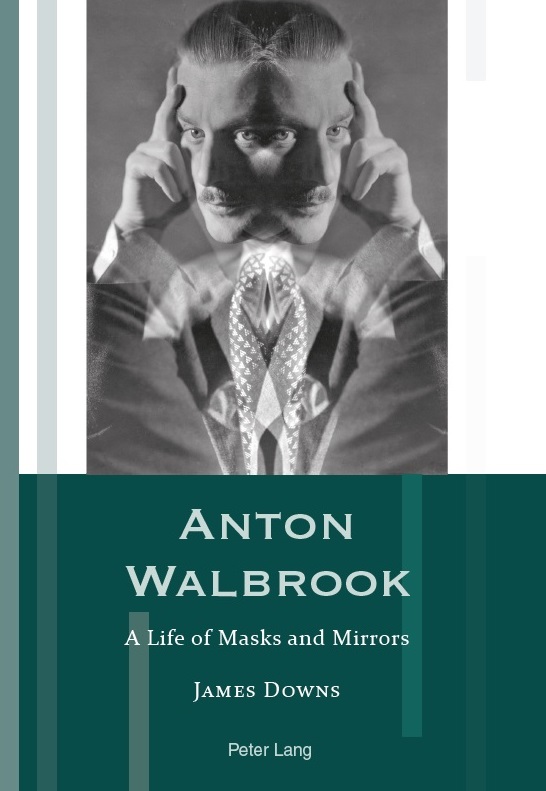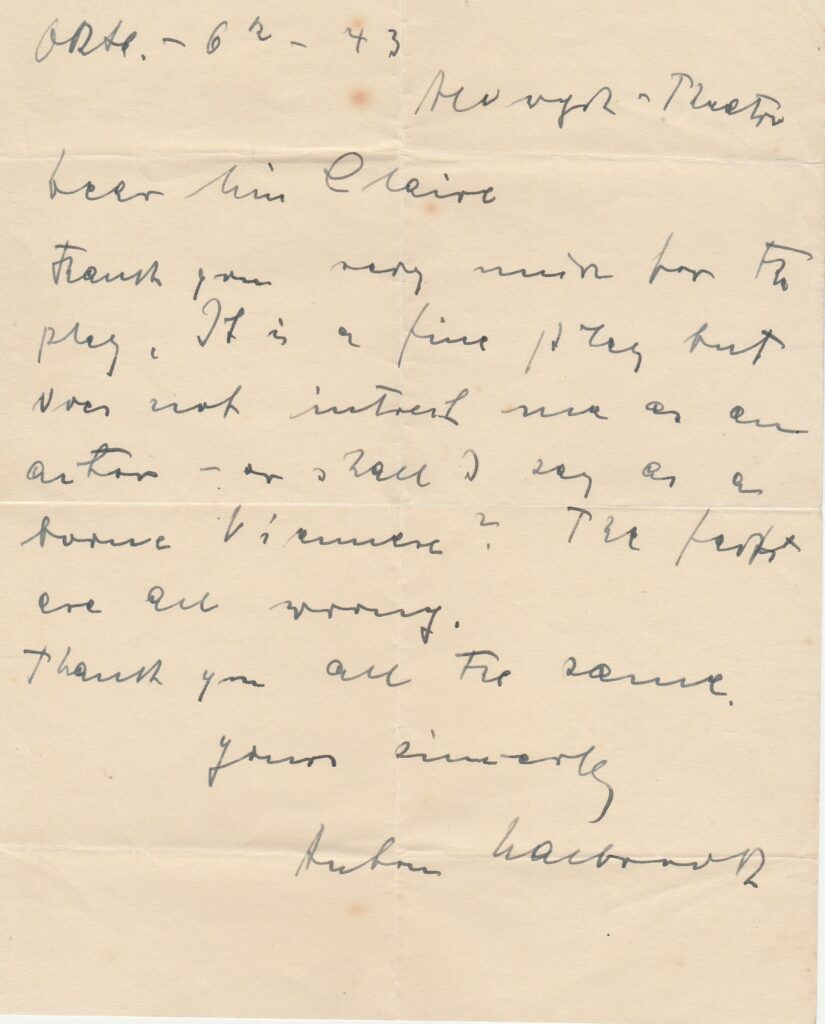AW was born on this day in 1896 and this will be the last time I celebrate the anniversary of his birth before the publication of my biography, Anton Walbrook. A Life of Masks and Mirrors, which should be available in a few weeks time.

As many of you know, my original aim had been to have the biography published in the summer of 2017 to coincide with the 50th anniversary of his death. For various reasons, however, that was not to be. Although I regret this in some regards, it was probably a good thing because my research uncovered so much more over the last three years. In fact, even since submitting the manuscript and doing final proof checks on the printer’s drafts, I’m still coming up with new nuggets of information or further thoughts about AW’s life and work.
At some point, though, one needs to draw a line under a project and get it out there, otherwise it will never see the light of day. It is too tempting to keep revising, improving, correcting, expanding, pushing an evolving work-in-progress towards an ever-receding horizon, and then find yourself at the end of life with a crumpled, dog-eared manuscript that no one will know what to do with when you’re gone. A Life of Masks and Mirrors will never be the definitive word on Walbrook/Wohlbrück, but it represents the fruits of over a decade of work as it now stands; any amendments, corrections or additions will need to wait for a second edition.
To mark today’s anniversary, I thought I would share a sneak preview of the opening pages of the biography, heralding AW’s birth in the city of Vienna:
“In March 1896 the Lumière Brothers, Auguste and Louis, brought their new invention to Vienna, the capital of the Austro-Hungarian Empire. The Cinématographe – a lightweight device combining camera, printer and projector – had been unveiled to the public in Paris a few months earlier and was now touring the world. The Vienna screenings opened on 27 March 1896 and followed the same pattern as in Paris, with a private show at the city’s k. k. Graphische Lehr- und Versuchsanstalt [Graphic Research Institute] followed by public demonstrations at Kärtner Straße 45 in the city centre. These screenings ran throughout the day from 10 in the morning until 8 at night and, for a fee of fifty kreuzer, visitors could watch a selection of short documentary films accompanied by live piano music. To make the shows more attractive to Viennese citizens, the Lumière agents Alexander Promio and Alexander Werschinger filmed a series of sequences around the capital in early April: shots of St Stephan’s Cathedral, the huge Ferris wheel in the Prater (which would feature in The Third Man five decades later) and scenes of crowds strolling through the Stadtpark. A special screening of these was arranged for the Emperor Franz Joseph in the Hofburg on 18 April 1896. Werschinger recalled the scene:
We had a small room on the second floor of the Burg, as the palace is known, which we were able to try out two days in advance. The entire presentation was to be limited to five minutes, as it was feared that the flickering pictures could damage His Majesty’s eyes. It was also very difficult to explain to the attendant that the demonstration had to be carried out in the dark. He said that this was not possible because court protocol demanded that two candles should always be lit in the presence of His Majesty. Everyone was amazed that after he had seen the pictures, the Emperor demanded very animatedly that they be shown again twice.
The cinema had arrived in Vienna.
Seven months later, in the same city, Adolf Anton Wilhelm Wohlbrück
was born.
Vienna was still buzzing with excitement over this new form of entertainment, but nobody at the time could foresee that ‘moving pictures’ would provide a career for the newborn child. Nor could they have foreseen that within twenty years the Emperor’s candles would be extinguished and his Empire dismembered. For the time being, Vienna was on the rise.
Karl Lueger’s Christian Social Party had recently wrestled power from the Liberals and with Lueger as Mayor, Vienna began its transformation into a city of elegant gardens and parks. Artists, writers, musicians and other intellectuals met to discuss their views over coffee in Café Griensteidl, Café Central, or Café Museum. Prominent among these was a group known as Jung Wien [Young Vienna], whose members included the playwrights Arthur Schnitzler – then writing his controversial Reigen – and Hugo von Hofmannsthal. Egon Schiele was about to spearhead the Wiener Secession art movement, ‘Waltz King’ Johann Strauss the Younger – composer of the Blue Danube waltz, Die Fledermaus and Der Zigeunerbaron [The Gypsy Baron] – lived in Igelgasse, Freud had just coined the term ‘psychoanalysis’, Gustav Mahler had recently been appointed Director of the State Opera House, and cinema was the newest addition to the arts in which the
Wohlbrück family had been involved for centuries….”
The chapter then goes on to discuss AW’s ancestry and family background, his childhood in Vienna and Berlin, and the beginning of his acting career at the Deutsches Theater. Those who want to read more will have to wait for the book to come out, but in the meantime, here’s some of that wonderful footage of Vienna, here showing the busy pedestrian crossing on Ringstraße opposite the magnificent State Opera House, then known as the Wien Hofoper:





